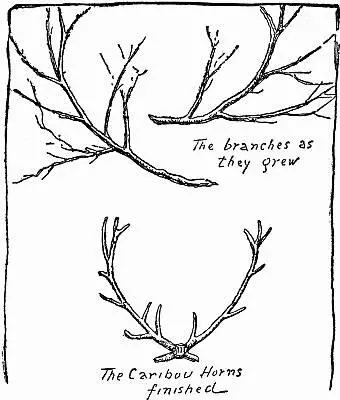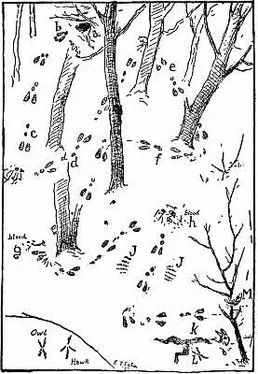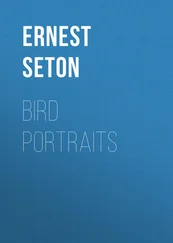Ernest Seton - Woodland Tales
Здесь есть возможность читать онлайн «Ernest Seton - Woodland Tales» весь текст электронной книги совершенно бесплатно (целиком полную версию без сокращений). В некоторых случаях можно слушать аудио, скачать через торрент в формате fb2 и присутствует краткое содержание. Год выпуска: 2007, Жанр: Природа и животные, Сказка, на английском языке. Описание произведения, (предисловие) а так же отзывы посетителей доступны на портале библиотеки ЛибКат.
- Название:Woodland Tales
- Автор:
- Жанр:
- Год:2007
- ISBN:нет данных
- Рейтинг книги:4 / 5. Голосов: 1
-
Избранное:Добавить в избранное
- Отзывы:
-
Ваша оценка:
- 80
- 1
- 2
- 3
- 4
- 5
Woodland Tales: краткое содержание, описание и аннотация
Предлагаем к чтению аннотацию, описание, краткое содержание или предисловие (зависит от того, что написал сам автор книги «Woodland Tales»). Если вы не нашли необходимую информацию о книге — напишите в комментариях, мы постараемся отыскать её.
Woodland Tales — читать онлайн бесплатно полную книгу (весь текст) целиком
Ниже представлен текст книги, разбитый по страницам. Система сохранения места последней прочитанной страницы, позволяет с удобством читать онлайн бесплатно книгу «Woodland Tales», без необходимости каждый раз заново искать на чём Вы остановились. Поставьте закладку, и сможете в любой момент перейти на страницу, на которой закончили чтение.
Интервал:
Закладка:
Maybe some of our Woodcraft girls can find an initiation in this. Put it just as the witch did it, but let it be considered a success if the stick is two feet long and nowhere half an inch out of true line. Let me add a Woodcraft proverb which should also have its mead of comfort—The Great Spirit can draw a straight line with a crooked stick.
TALE 96
The Animal Dance of Nana-bo-jou
For this we need a Nana-bo-jou; that is, a grown-up who can drum and sing. He has a drum and drumstick, and a straw or paper club; also two goblins, these are good-sized boys or girls wearing ugly masks, or at least black hoods with two eyeholes, made as hideous as possible; and any number of children, from three or four up, for animals. If each has the marks, colours, etc., of some bird or beast, so much the better.
First, Nana-bo-jou is seen chasing the children around the outside of the circle, trying to catch one to eat; but failing, thinks he'll try a trick and he says: "Stop, stop, my brothers. Why should we quarrel? Come, let's hold a council together and I will teach you a new dance."
The animals whisper together and the Coyote comes forward, barks, then says:
"Nana-bo-jou, I am the Coyote. The animals say that they will come to council if you will really make peace and play no tricks."
"Tricks!" says Nana-bo-jou, "I only want to teach you the new songs from the South."
Then all the animals troop in and sit in a circle. Nana-bo-jou takes his drum and begins to sing:
"New songs from the South, my brothers,
Dance to the new songs."
Turning to one, he says: "Who are you and what can you dance?"
The answers are, "I am the Beaver [or whatever it is] and I can dance the Beaver Dance."
"Good! Come and show me how."
So the Beaver dances to the music, slapping the back of his flat right hand, up and under his left hand for a tail, holding up a stick in both paws to gnaw it, and lumbering along in time to the music, at the same time imitating the Beaver's waddle.
Nana-bo-jou shouts: "Fine! That is the best Beaver Dance I ever saw. You are wonderful; all you need to be perfect is wings. Wouldn't you like to have wings so you could fly over the tree-tops, like the Eagle?"
"Yes," says the Beaver.
"I can make strong medicine and give you wings, if all the animals will help me," says Nana-bo-jou. "Will you?"
"Yes," they all cry.
"Then all close your eyes tight and cover them with your paws. Don't look until I tell you. Beaver, close your eyes and dance very fast and I will make magic to give you wings."
All close and cover their eyes. Nana-bo-jou sings very loudly and, rushing on the Beaver, hits him on the head with the straw club. The Beaver falls dead. The two goblins run in from one side and drag off the body.
Then Nana-bo-jou shouts: "Look, look, now! See how he flies away! See, there goes the Beaver over the tree-tops." All look as he points and seem to see the Beaver going.
Different animals and birds are brought out to dance their dances and are killed as before. Then the Crow comes out, hopping, flopping, cawing. Nana-bo-jou looks at him and says: "You are too thin. You are no good. You don't need any more wings," and so sends him to sit down.
Then the Coyote comes out to do the Coyote Dance, imitating Coyote, etc.; but he is very suspicious and, in answer to the questions, says: "No; I don't want wings. The Great Spirit gave me good legs, so I am satisfied"; then goes back to his seat.
Next the Deer, the Sheep, etc., come out and are killed; while all the rest are persuaded that the victims flew away. But the Coyote and the Loon have their doubts. They danced in their turns, but said they didn't want any change. They are satisfied as the Great Spirit made them. They are slow about hiding their eyes. At last, they peek and realize that it is all a trap and the Loon shouts: "Nana-bo-jou is killing us! It is all a trick! Fly for your lives!"
As they all run away, Nana-bo-jou pursues the Loon, hitting him behind with the club, which is the reason that the Loon has no tail and has been lame behind ever since.
The Loon shouts the Loon battle-cry, a high-pitched quavering LUL-L-L-O-O-O and faces Nana-bo-jou; the animals rally around the Loon and the Coyote to attack the magician. All point their fingers at him shouting "Wakan Seecha" (or Black Magic). He falls dead in the circle. They bury him with branches, leaves, or a blanket, and all the animals do their dances around him.
Before beginning, the story of the dance should be told to the audience.
TALE 97
The Caribou Dance

Horns for the Caribou Dance
The easiest of our campfire dances to learn, and the best for quick presentation, is the Caribou Dance. It has been put on for public performance after twenty minutes' rehearsing, with those who never saw it before, because it is all controlled and called off by the Chief. It does equally well for indoor gymnasium or for campfire in the woods.
In the way of fixings for this, you need only four pairs of horns and four cheap bows. Real deer horns may be used, but they are scarce and heavy. It is better to go out where you can get a few crooked limbs of oak, cedar, hickory or apple tree; and cut eight pairs, as near like those in the cut as possible, each about two feet long and one inch thick at the butt. Peel these, for they should be white; round off all sharp points of the branches, then lash them in pairs, as shown. A pair, of course, is needed for each Caribou. These are held in the hand and above the head, or in the hand resting on the head.
The four Caribou look best in white. Three or four hunters are needed. They should have bows, but no arrows. The Chief should have a drum and be able to sing the Muje Mukesin, or other Indian dance tune. One or two persons who can howl like Wolves should be sent off to one side, and another that can yell like a Lynx or a Panther on the other side, well away from the ring. Otherwise the Chief or leader can do the imitations. Now we are ready for
THE DANCE OF THE WHITE CARIBOU
The Chief begins by giving three thumps on his drum to call attention; then says in a loud, singing voice: "The Caribou have not come on our hunting grounds for three snows. We need meat. Thus only can we bring them back, by the big medicine of the Caribou Dance, by the power of the White Caribou."
He rolls his drum, then in turn faces each of the winds, beckoning, remonstrating, and calling them by name; Kitchi-nodin (West); Keeway-din (North); Wabani-nodin (East); Shawani-nodin (South). Calling last to the quarter whence the Caribou are to come, finishing the call with a long KO-KEE-NA. Then as he thumps a slow single beat the four Caribou come in in single file, at a stately pace timed to the drum. Their heads are high, and they hold the horns on their heads, with one hand, as they proudly march around. The Chief shouts: "The Caribou, The Caribou!" After going round once in a sun circle (same way as the sun), they go each to a corner. The Chief says: "They honour the symbol of the Great Spirit." The drum stops; all four march to the fire. They bow to it together, heads low, and utter a long bellow.
Then the Chief shouts: "They honour the four Winds, the Messengers."
Then the Caribou back up four paces each, turn suddenly and make a short bow, with a short bellow, then turn and again face the fire.
The Chief shouts: "Now they live their wild free lives on the plain." He begins any good dance song and beats double time. The Caribou dance around once in a circle.
Читать дальшеИнтервал:
Закладка:
Похожие книги на «Woodland Tales»
Представляем Вашему вниманию похожие книги на «Woodland Tales» списком для выбора. Мы отобрали схожую по названию и смыслу литературу в надежде предоставить читателям больше вариантов отыскать новые, интересные, ещё непрочитанные произведения.
Обсуждение, отзывы о книге «Woodland Tales» и просто собственные мнения читателей. Оставьте ваши комментарии, напишите, что Вы думаете о произведении, его смысле или главных героях. Укажите что конкретно понравилось, а что нет, и почему Вы так считаете.




